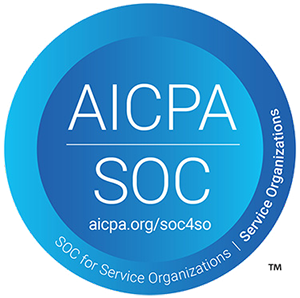Recruiters don’t talk about “volume” anymore - they talk about the flood. A single job post can bring in hundreds of applications within days. According to a LinkedIn report, each corporate job post receives an average of 250 applications. Out of those, only 4 to 6 candidates are shortlisted for interviews.
What happens in between is what’s quietly breaking recruitment teams today.
Teams are overwhelmed by administrative tasks, drowning in resumes that reveal too little, and still expected to deliver lightning-fast decisions. Candidate expectations have evolved. So have business demands. But the tools and tactics for early-stage screening? Largely stuck in a pre-AI era.
Why Is It So Hard to Get from 200 Resumes to 5 Interviews?
For every role, recruiters spend an average of 23 hours a week screening candidates [²]. And yet, most admit they still make decisions based on gut feel, inconsistent rubrics, or resume formatting. Here’s why that’s a problem and where the cracks begin to show.
-
The Resume Is No Longer a Reliable Source of Truth: Resumes are templated, often embellished, and deeply inconsistent. A Harvard Business School study revealed that nearly 85% of employers report that qualified candidates are being filtered out by traditional systems due to rigid keyword-based filters or biases. In reality, a candidate’s true fit can’t be captured in bullet points. But that’s still what hiring funnels rely on to do the first cut.
-
Bias Creeps in Early - and Subconsciously: Even before the interview stage, decisions are made based on names, gaps, colleges, or formatting. According to the National Bureau of Economic Research, candidates with "white-sounding" names receive 50% more callbacks than identical resumes with "African-American-sounding" names. It’s not deliberate, but it’s prevalent - and it’s a clear indication that subjective review processes are silently excluding talent.
-
Top Talent Is Gone Before You Blink: Research from Officevibe shows that top candidates are off the market within 10 days. Unfortunately, the average time-to-hire in most organizations is still 23 to 35 days, This delay isn’t just inefficient — it’s costly. Good candidates don’t wait. They engage where the process is fast, transparent, and candidate-centric.
-
Interview Panels Are Overbooked: Once recruiters identify the short list, the next bottleneck appears - finding time in busy calendars. Interview panels, often stretched across time zones or departments, take days or weeks to align schedules, slowing momentum and raising dropout risk. The average scheduling cycle across three interviewers adds up to 6-10 additional days.
-
The Experience Feels Robotic - for Candidates Too: Modern candidates, especially Gen Z, crave connection. But instead, they’re met with templated emails, radio silence after application, and redundant form-fills. According to CareerBuilder, 78% of candidates say the overall candidate experience reflects how a company values its people. A broken experience doesn’t just lose one candidate it damages brand perception for future ones.
Recruiters feel this pressure. They want to deliver better, move faster, be more strategic. But with the growing scale and shrinking timelines, that’s nearly impossible with traditional workflows.
The Case for Rethinking Screening Entirely
It’s time to challenge the idea that every candidate must be reviewed manually, or that interviews only begin when a human picks up the phone. What if the screening conversation the part where potential is actually uncovered could begin as soon as a candidate applies?
This shift is already underway. Forward-thinking companies are using asynchronous conversations powered by AI to scale empathy, speed, and structure in screening.
These systems don’t just ask questions. They interpret context, capture nuance, and present recruiters with rich candidate profiles not just raw data.
Conversational AI: Replacing Gut Feel with Structured Insight
When candidates speak in their own words, in their own time recruiters get far more than a summary of past roles. They get signals.
Signals about:
-
Clarity of communication
-
Cultural alignment
-
Behavioral traits
-
Real-life problem-solving
Unlike a resume or static form, a conversational AI can standardize how every candidate is asked, scored, and compared, removing unconscious bias from the equation.
It also respects candidate time. They don’t wait for a recruiter to call or fill out redundant forms. They talk just as they would in a phone screen but on their schedule. And the AI listens, evaluates, and presents structured insights to hiring teams within minutes.
This Isn’t the Future. It’s Here — Meet Ivy.
Ivy, Talview’s AI-powered interviewer, is built to solve this exact problem.
It engages candidates in human-like asynchronous interviews, powered by natural language understanding and intelligent scoring. Think of it as a virtual recruiter that works 24/7 - and treats every candidate fairly, consistently, and with attention.
Ivy isn’t a chatbot. It’s a trained interviewer who captures the kind of nuance and insight that hiring managers look for in real conversations. It automatically summarizes each interview, flags behavioral cues, and integrates into your existing hiring workflow.
Most importantly, Ivy helps hiring teams go from 200 resumes to 5 meaningful conversations without fatigue, missed signals, or bias.
What Sets Ivy Apart?
- Human-Centered AI: Ivy understands tone, intent, and pacing, making candidates feel heard, not processed.
- Transcripts and Smart Summaries: Every conversation is transcribed, with top skills, keywords, and red flags highlighted.
- Custom Scoring Models: Talent teams can align Ivy’s scoring framework to match job competencies and organizational values.
- Always-On Availability: Candidates can complete their screening at 11 PM or on weekends Ivy doesn’t sleep.
- Bias-Free and Compliant: Structured interviews mean every candidate gets asked the same questions, scored the same way, and evaluated fairly.
Solving the Recruiter’s Bandwidth Crisis
With Ivy, recruiters no longer need to choose between quality and speed. They spend less time scanning resumes and more time reviewing structured insights. They stop chasing calendars and start making faster, informed decisions.
By the time a human interview is scheduled, recruiters already know:
- Who communicates effectively
- Who meets the role’s competency threshold
- Who demonstrates alignment with team values
The guesswork is gone. The noise is filtered. And what’s left is the signal.
Candidates Win Too
In an Ivy-led screening flow, candidates:
- Experience faster response times
- Can express themselves more naturally
- Get consistent, fair evaluations
- Feel engaged from the first touchpoint
This kind of experience turns even rejected candidates into advocates something no bulk resume scan or rigid ATS workflow can accomplish.
Rethinking Talent at Scale
We’re in a hiring landscape where talent is abundant, but time is scarce. Teams can’t afford to let quality slip through because their tools can’t keep up. They need solutions that match today’s pace of business and today’s expectations from candidates.
Talview’s Ivy AI Interviewer offers this intelligent automation without losing the human touch.







Leave a Reply